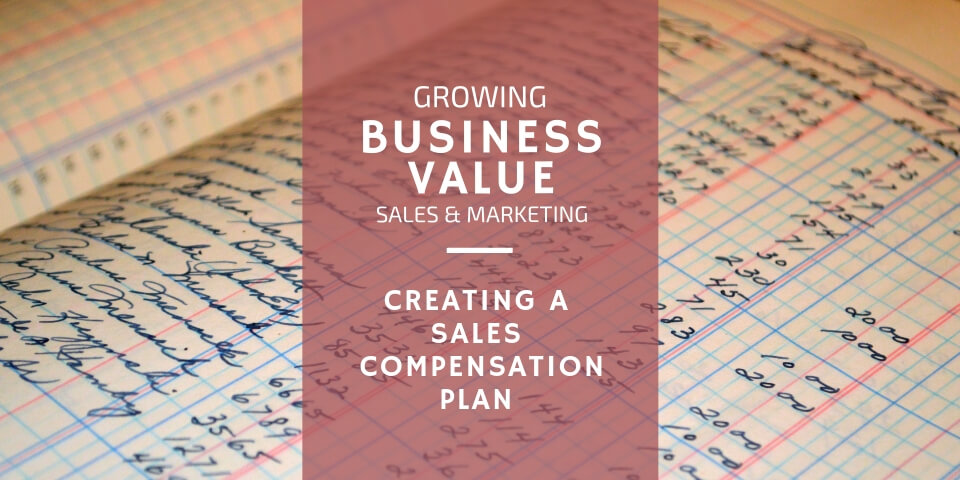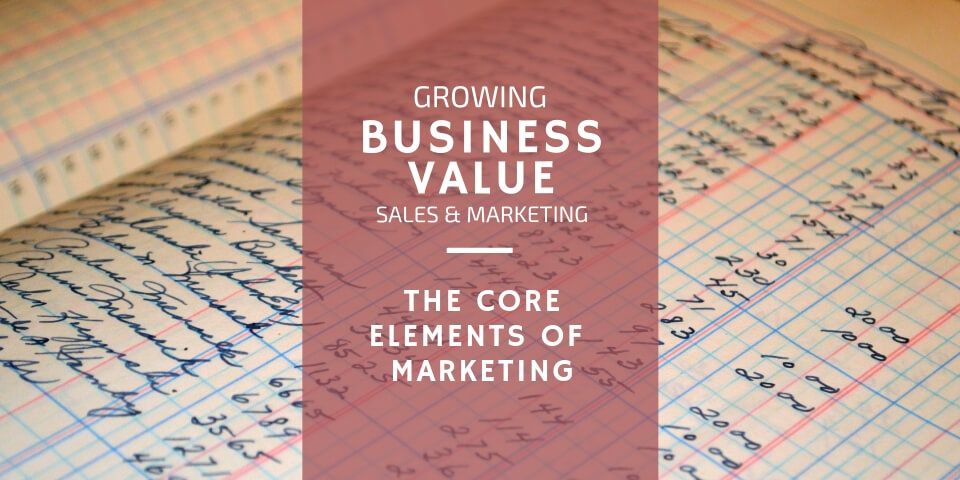
Creating a Sales Compensation Plan That Works for You & Your Team
February 1, 2019
Still Doing Your Own Payroll? – Financially Simple Reasons to Stop
February 5, 20199 Core Elements Of Marketing Your Business Must Have

English Oxford Dictionaries describes marketing as “The action or business of promoting and selling products or services including market research and advertising.” That means that marketing is present during all stages of business, from the beginning to the end. Ultimately, marketing is the process of getting customers interested in your company’s products or services. If this sounds essential, well it is. But where to begin? With learning and implementing the core elements of marketing of course.
Podcast Time Index for “So Many P’s – The Basic Elements of Marketing”
01:08 – The Many P’s of Marketing
02:01 – Where Marketing starts
03:10 – Definition of Marketing
04:51 – The 4 P’s
10:28 – The Extended Marketing Mix
14:10 – The Ninth P: Profitability
16:15 – Summary
In the 1960’s, marketing professor and author E. Jerome McCarthy developed a basic framework for marketing called the “4 Ps of marketing.” Then, in 1981, Booms and Bitner added three more Ps to the marketing mix. However, I believe there are nine basic elements to marketing products and services, not just four or seven.
The 9 Ps – The Elements of a Modern Marketing Mix
#1. Product
To market your product or service, you have to ask yourself several questions. Do you know your product well enough to sell it to customers? Who is your ideal customer? Does this product fit into your market place? What messaging will help you increase sales of the product? Can you develop or modify the product to make it better or more appealing? How will you sell your product; what platforms will you use? Essentially, you want to make your product marketable.
#2. Price
The second “P” of marketing is price. This is where your marketing team is going to check out your competitor’s pricing and use focus groups or surveys to estimate the price customers are willing to pay for your product. You see, if the price is too high, then you’re going to lose your potential customer base. Yet, if it’s too low, then your company will lose too much money. Neither of those options makes your business profitable, so you have to deal with price when you’re marketing.
#3. Place
Location, location, location…the “place” can have a huge effect on marketing. In other words, how and where will you market your product for sale? Will you sell it strictly through an e-commerce blog or site, or will you have a brick-and-mortar store as well? Will you sell your products on television through QVC or solely through social media sites? Before you can advertise your products, you must have a place people can go to purchase your goods or services.
#4. Promotion
The last original “P” identified by McCarthy is promotion. Once you know where customers can buy your products or services, you need to promote them through advertising in your marketplace. Maybe you use social media, direct mailers, television, or radio. Perhaps you host an event or go to networking events. Ultimately, the goal of promotion is to generate more sales leads by showing off your product or service.
#5. People
The first 4 Ps are where marketing begins. But marketing involves so much more. Additionally, companies rely on people to market. They are the ones running your business from the front lines, the phone lines, or the Internet lines. Everyone from your maintenance staff to your managing directors meeting and greeting customers. Their attitudes may not affect whether customers come into your store, but they will affect whether customers come back to your store. As I’ve discussed before, your team’s attitude reflects the culture of your company. Therefore, your team members can be your greatest marketing asset or they can bring about your marketing plan’s downfall.
#6. Process
Another “P” added to the Ps of marketing list in 1981 is process. How are you going to deliver the product or service to your customers? Will it be through the mail or through an actual retail store? If you offer services, maybe you have customers meet you in your office, or you go to theirs. Inevitably, you have to know how to deliver your product or service to your customer once they purchase. If the process is too slow or the communication is too poor, you will lose customers and money. However, if you keep customers informed throughout the delivery process and you make the process quick and efficient, you will increase your customer base and profitability because customers are likely to return to you for products and services.
#7. Physical Evidence
Although it’s fairly easy to market physical products you sell, it’s a bit harder marketing services you provide. Technically, you don’t have anything to show customers. They can’t pick up your services and “try them on for size,” if you will. Therefore, to market your intangible services, you need to create something tangible that describes, explains, or represents your service process. Maybe you create a chart that shows your service process or a graph that explains your service offerings. Give them something physical they can touch and evaluate.
#8. Productivity
Perhaps the most controversial P of marketing is productivity. Yet, measuring how productive your marketing campaigns are is fairly vital to your marketing department. Essentially, those in your marketing department are trying to read the marketplace and offer goods and services in such a way that will appeal to those people. Your company’s increases or decreases in sales of the advertised products and services should then reveal how productive your marketing campaign was.
#9. Profitability
I’d actually argue that profitability should be at the top of the list of marketing Ps. Unless the marketing plan and process leads to profitability, then you’re wasting your business’s money. You need your marketing campaigns to be both productive and profitable, not just productive.
Use the 9 Ps’ Elements to Develop Your Marketing
If you look at those basic elements of marketing, then you’ll notice that you have all the core elements you need to develop a marketing plan. Essentially, marketing is looking at those 9 elements and developing a method to get your products or services in front of your potential buyers. It’s meeting your customers’ pain point so they act and purchase your products.
Be sure to listen to the podcast accompanying this post for more information on this topic! You can also find the podcast on iTunes, Stitcher, and, Spotify.



